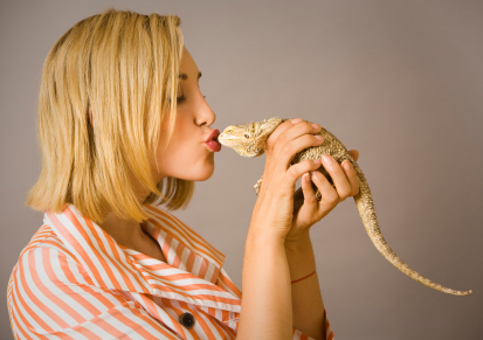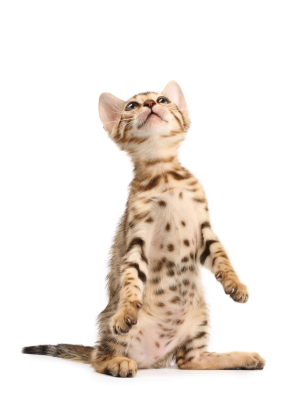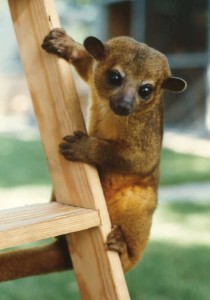 If you have a fondness for rare and unusual pets, pet insurance is a must. Most exotic pets range in cost from just under a hundred dollars for an exotic bird or fish to thousands of dollars for certain breeds of snakes, reptiles, tigers, bobcats, marsupials and primates. So what would happen if your $7,000 squirrel monkey attacked a neighbor, or you fine-feathered scarlet macaw flew too close to a ceiling fan? Or worse, your potbelly pig got into the cabinet of cleaners, would you be able to afford the pricey vet bills?
If you have a fondness for rare and unusual pets, pet insurance is a must. Most exotic pets range in cost from just under a hundred dollars for an exotic bird or fish to thousands of dollars for certain breeds of snakes, reptiles, tigers, bobcats, marsupials and primates. So what would happen if your $7,000 squirrel monkey attacked a neighbor, or you fine-feathered scarlet macaw flew too close to a ceiling fan? Or worse, your potbelly pig got into the cabinet of cleaners, would you be able to afford the pricey vet bills?
Pet insurance companies often limit coverage strictly to dogs and cats, but all pets are vulnerable to injuries and sickness that may require veterinary attention… and that includes exotics.
According to the most recent National Pet Owners Survey (NPOS) by the American Pet Products Manufacturers Association or APPMA, found that 18.2 million Americans own exotic pets.
The Humane Society reports that up to 10,000 tigers are kept as private pets in the United States. In the state of Florida alone, 3,837 people have permits to own wild animals. Florida issues nearly 4,000 exotic pet ownership permits each year. The most recent statistics by the AESOP-Project (Allied Effort to Save Other Primates), estimate that 15,000 private residents in the U.S. own primates as pets.
California-based Veterinary Pet Insurance (VPI) offers exotic pet policies to owners in the U.S., with more than 5,000 policies in force as of February 2010. Sales for exotic pet insurance make up about 2 percent of their pet insurance policies, according to VPI spokesperson Grant Biniasz.
What does exotic pet insurance pay for?
Routine vet visits
Prescription medications
Surgical procedures
Boarding
TOP 5 MOST COMMON EXOTIC PETS
1. Kinkajou or “Honey Bear”
What is it? A nocturnal rainforest mammal
What does it eat? Ripe fruit
Does it smell? No
How big does it get? The average adult weights between 4 to 7 lbs. with a typical body weight between 16 and 24 inches and average tail length between 16 and 22 inches.
How long does it live? 23 years, with a maximum recorded lifespan of 41 years.
Where do you keep it? Kinkajous should be kept in a very large birdcage when you can’t watch them. The cage should have branches for climbing, a shelf for eating, and a nest box for sleeping.
How much does it cost? In the range of $2,700
Beware: Known as the “lion monkey” in some parts of the world, kinkajous have been known to scratch and bite deeply when they’re startled or hear a loud noise.
Common ailments: Ear infections, bacterial pneumonia, cardiomyopathy, cardiovascular diseases, peridontal diseases 
2. Bengal Cats
What is it? Bengal cats are a breed of domestic cat that looks like a small leopard. The first Bengals were created by crossing domestic cats with Asian Leopard Cats.
What does it eat? Cat food
Does it smell? No
How big does it get? Although built differently than typical house cats, they are similar in size.
How long does it live? 10 to 15 years.
Personality: Bengals are outgoing and enjoy games like fetch. They also enjoy being walked on a harness or leash.
How much does it cost? The cost ranges from $500 to over $1,000.
Beware: The Bengal cat, a popular hybrid, is known for having a cat-version of Attention Deficit Disorder: When feeling ignored or bored, it will cause trouble and knock things over.
Common ailments: Retinal atrophy, knee problems, allergies to anesthetic, heart problems
3. Bearded Dragons
What is it? A genus of lizards from Australia
What does it eat? Crickets, bugs, small mice and some vegetation.
Does it smell? If not cleaned often enough, the lizard’s habitat can indeed smell.
How big does it get? About 13 to 24 inches.
How long does it live? 10-20 years.
Where do you keep it? In a tank with proper water, basking rocks, and sufficient floor coverage, oftentimes shredded newspaper.
How much does it cost? $50 to $100
Beware: Adequate UV needs to be directed into the tank by way of timed lights for Bearded Dragon survival.
Common ailments: Vitamin deficiencies, injuries, respiratory, gastrointestinal and fungal infections, “egg binding”

4. Pot Bellied Pig
What is it? A domesticated, trainable pig with upright ears, large belly and a straight tail.
What does it eat? Pig food
Does it smell? Despite stereotypes, pet pigs do not smell.
How big does it get? They can weigh anywhere from 60 to 300 lbs.
How long does it live? 12-18 years
Where do you keep it? Pot bellied pigs thrive as household or yard pets.
How much does it cost? Between $300 to $750
Beware: Pigs are obsessed with food, often opening cupboards, cabinets and refrigerators for food. They can also become aggressive when a child has food.
Common ailments: Skin disorders and diseases, respiratory diseases, improperly formed snout, hernia, lameness
5. Chinchilla
What is it? A small rodent native to the Andes Mountains in South America commonly used for their thick, dense fur.
What does it eat? A loose hay and hay-based pellet diet, because Chinchillas have a difficult time digesting fatty foods, high-protein foods, or too many green plants.
How big does it get? Chinchillas typically grow to be about 12 inches long.
How long does it live? 8 to 10 years
Where do you keep it? Chinchillas stay in special cages, but can be brought out for play and social interactions.
How much does it cost? From $70 to $200.
Beware: Chinchillas can be high maintenance animals whose teeth need to be continually worn down, cannot be in warm climates, and must follow a strict diet for survival.
Common ailments: Injuries, broken teeth, broken bones, abscesses, heat stroke
Sources: ChinchillaClub.com, BeardedDragon.org, About.com, ASPCA, marechalcattery.com

 “Exotic pet insurance is not any less important than dog or cat insurance, because the point of pet insurance is to manage the risk of the unexpected and help pet owners budget for unexpected events,” says Biniasz. “Veterinary costs can be just as expensive for exotic pets as they are for dogs and cats.”
“Exotic pet insurance is not any less important than dog or cat insurance, because the point of pet insurance is to manage the risk of the unexpected and help pet owners budget for unexpected events,” says Biniasz. “Veterinary costs can be just as expensive for exotic pets as they are for dogs and cats.”
Most experts suggest having a separate savings account for your exotic pet to help reduce costs.
According to Biniasz, an even better reason to insure an exotic pet is the fact that it is about one-third the price of insuring a dog, with exotic costs starting at about $8 per month. This can be a lifesaver for your exotic pet and a money-saver for you should their condition require a specialist or surgical procedure. In addition to this, some exotic pet insurance companies have their own network of vets and will only pay for services at those vets.
He also says people typically underestimate the potential cost of their pet and think they can cover veterinary costs themselves with credit cards or savings. However, this financial plan is a bit uncertain, and could quickly turn into a battle with debt.
The most common “exotic” pet insured through VPI is a rabbit, but other insurable species include various species of birds ranging in size from a canary to an ostrich or penguin; many types of non-venomous reptiles with and without legs; and various other exotics from hamsters and gerbils to goats.
And just in case you have a pet with an incredible lifespan like the African Gray Parrot (which typically lives between 50 and 70 years), Biniasz says rest easy: as long as the policy is kept in force and renewed, the bird can be insured for their entire lifetime. Also, keep in mind that exotic pet insurance will cost more if you keep your pet outside.
However, not all exotic animals are insurable through VPI. Excluded animals include livestock or food animals, zoo animals, and wild animals such as exotic cats, alligators, monkeys, fish and spiders. And although horses are very common, they are uninsurable through exotic pet insurance and require special equine insurance. Even some species of birds might require Avian insurance.
It’s important to remember that while exotic pet insurance covers infections, diseases, traumas, toxicities, skin, shell or feather disorders, nutritional problems and breeding complications, not all exotic pet insurance covers pet theft or injury from pet to owner. In some cases, according to the New York State Insurance Department, your homeowners policy may cover injuries or bites to a guest from an exotic pet through a special rider or for an additional premium.













